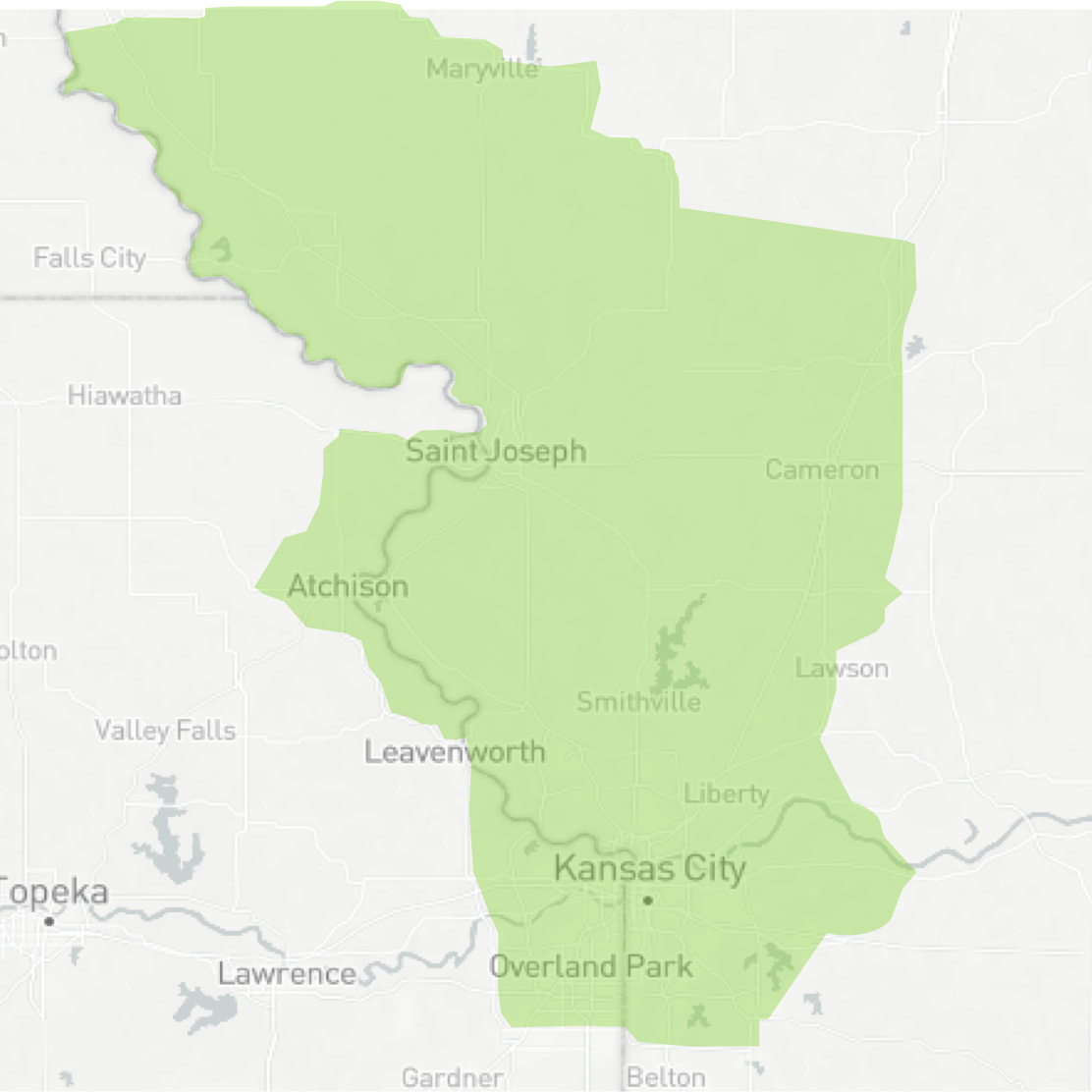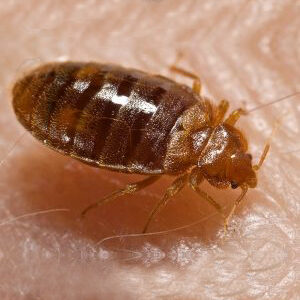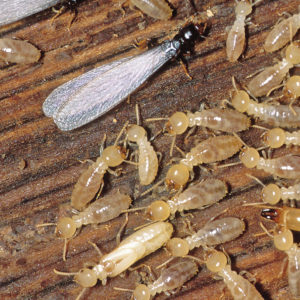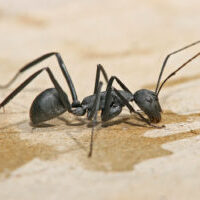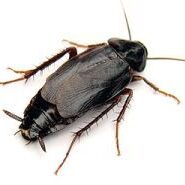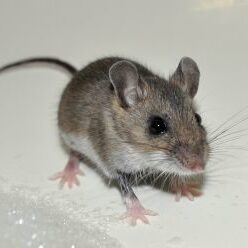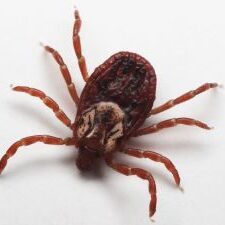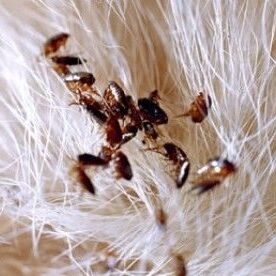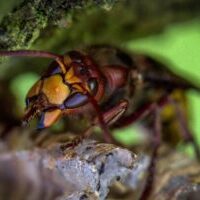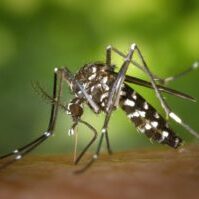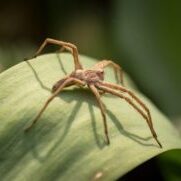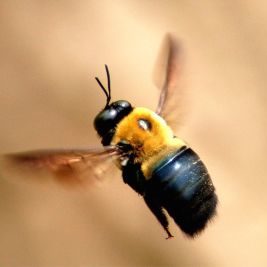
CARPENTER BEES
Carpenter bees are often mistaken for a bumblebee species, as they can be similar in size and coloration, though most Carpenter bees have a shiny abdomen, while in bumblebees the abdomen is completely clothed with dense hair. Males of some species have a white or yellow face, where the females do not; males also often have much larger eyes than the females, which relates to their mating behavior. Male Carpenter bees are often seen hovering near nests, and will approach nearby animals. However, males are harmless, since they do not have a stinger. Female Carpenter bees are capable of stinging, but they are docile and rarely sting unless caught in the hand or otherwise directly provoked. Carpenter bees are traditionally considered solitary bees, though some species have simple social nests in which mothers and daughters may cohabit. However, even solitary species tend to be gregarious, and often several will nest near each other.
Carpenter bees make nests by tunneling into wood, vibrating their bodies as they rasp their mandibles against the wood, each nest having a single entrance which may have many adjacent tunnels. The entrance is often a perfectly circular hole measuring about 16 millimetres (0.63 in) on the underside of a beam, bench, or tree limb. Carpenter bees do not eat wood. They discard the bits of wood, or re-use particles to build partitions between cells. The tunnel functions as a nursery for brood and storage for the pollen/nectar upon which the brood subsists. The eggs are very large relative to the size of the female, and are some of the largest eggs among all insects.
There are some 500 species of Carpenter bee worldwide. Their name (the genus Xylocopa) comes from the fact that nearly all species build their nests in burrows in dead wood, bamboo, or structural timbers (except those in the subgenus Proxylocopa, which nest in the ground). Carpenter bees overwinter as adults in wood within abandoned nest tunnels. They emerge in the spring, usually in April or May. After mating, the fertilized females excavate tunnels in wood and lay their eggs within a series of small cells. The cells are provisioned with a ball of pollen on which the larvae feed, emerging as adults in late summer. Coarse sawdust the color of fresh cut wood will often be present beneath the entry hole, and burrowing sounds may be heard from within the wood.
EXPERTS IN PEST CONTROL SINCE 1970!
Enter your information or call
(816) 279-2000
By clicking “GET ESTIMATE” I authorize Preferred Pest Control to contact me at this number. I understand I am not required to make a purchase.
PREFERRED PEST CONTROL
At Preferred Pest Control & Home Inspections, we offer comprehensive indoor and outdoor bed bug extermination services to stop infestations at their source. Our qualified exterminators are equipped to inspect your home environment, identify the scope of the problem, and determine the best course of action to eliminate those unwanted pests.
And when you hire us, you’ll benefit from our:
-
Reasonable bed bug extermination rates.
-
Easy, convenient appointment scheduling.
-
Dedication to your safety and comfort.
If you think you might have a bed bug problem in your home, don’t wait to get help. Call today for more information or to request an estimate.
As the leading bed bug extermination provider in NW Missouri and NE Kansas, we're equipped to handle any pest that may pop up and protect your property from future problems.
AREAS WE SERVICE
